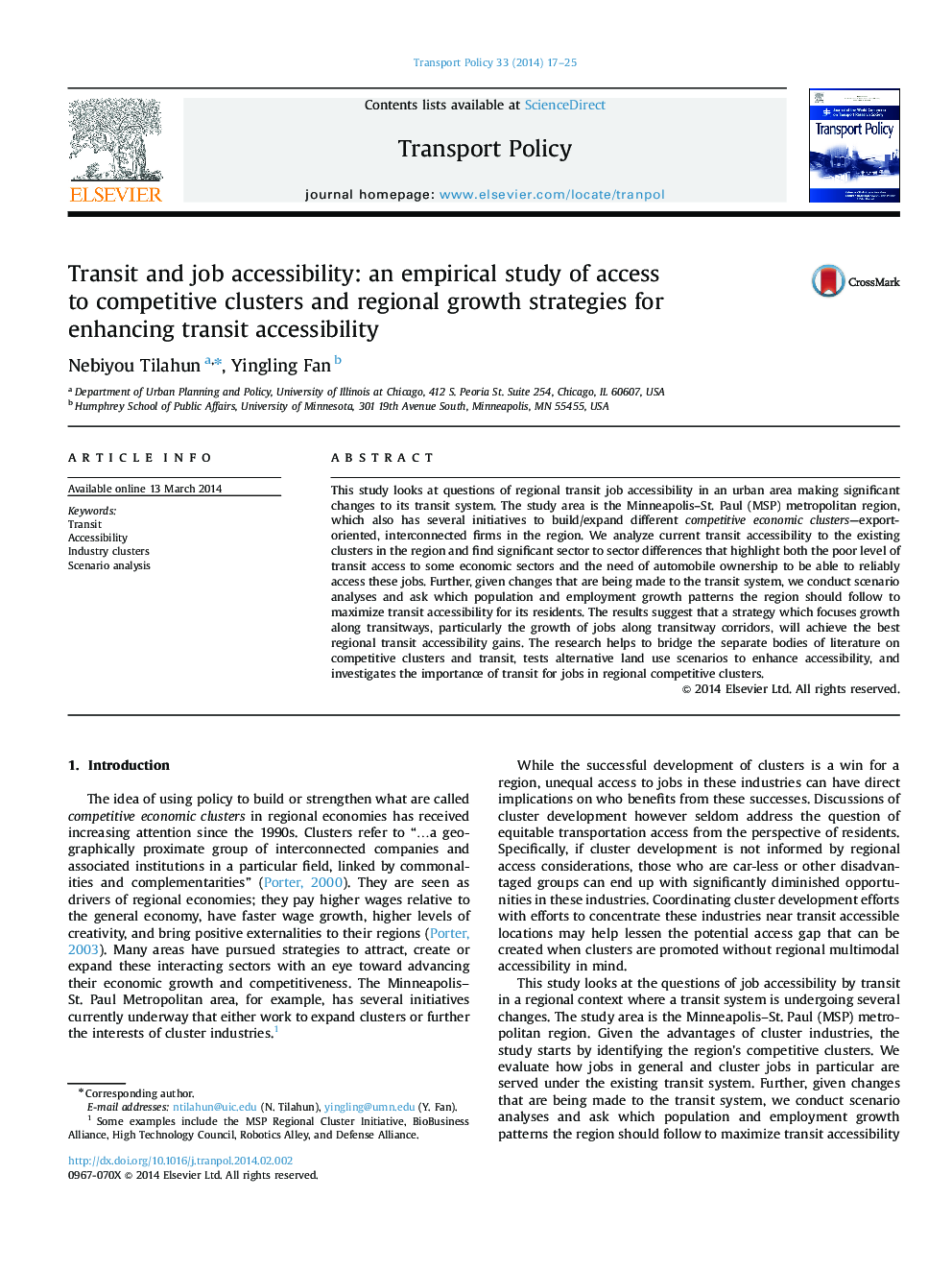| کد مقاله | کد نشریه | سال انتشار | مقاله انگلیسی | نسخه تمام متن |
|---|---|---|---|---|
| 1064831 | 1485844 | 2014 | 9 صفحه PDF | دانلود رایگان |
• This paper looks transit job accessibility, its variation by industry, and improvement strategies.
• Substantial accessibility differences between industry clusters are found.
• Land use change scenarios are run to evaluate accessibility improvement strategies.
• Employment and residential centralization along transitways are recommended.
• Employment centralization strategy offers the highest accessibility gains.
This study looks at questions of regional transit job accessibility in an urban area making significant changes to its transit system. The study area is the Minneapolis–St. Paul (MSP) metropolitan region, which also has several initiatives to build/expand different competitive economic clusters—export-oriented, interconnected firms in the region. We analyze current transit accessibility to the existing clusters in the region and find significant sector to sector differences that highlight both the poor level of transit access to some economic sectors and the need of automobile ownership to be able to reliably access these jobs. Further, given changes that are being made to the transit system, we conduct scenario analyses and ask which population and employment growth patterns the region should follow to maximize transit accessibility for its residents. The results suggest that a strategy which focuses growth along transitways, particularly the growth of jobs along transitway corridors, will achieve the best regional transit accessibility gains. The research helps to bridge the separate bodies of literature on competitive clusters and transit, tests alternative land use scenarios to enhance accessibility, and investigates the importance of transit for jobs in regional competitive clusters.
Journal: Transport Policy - Volume 33, May 2014, Pages 17–25
